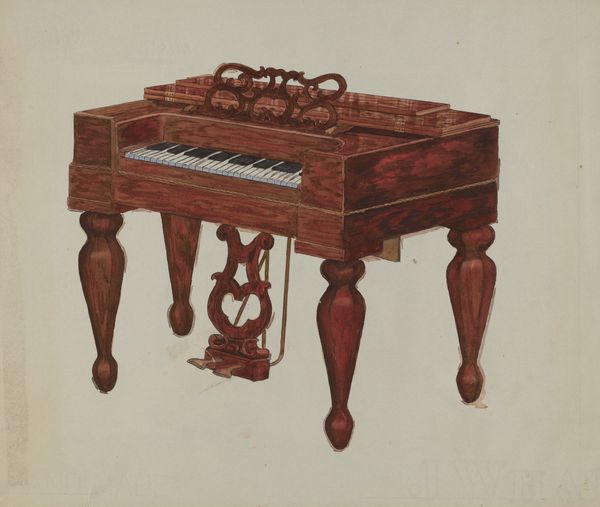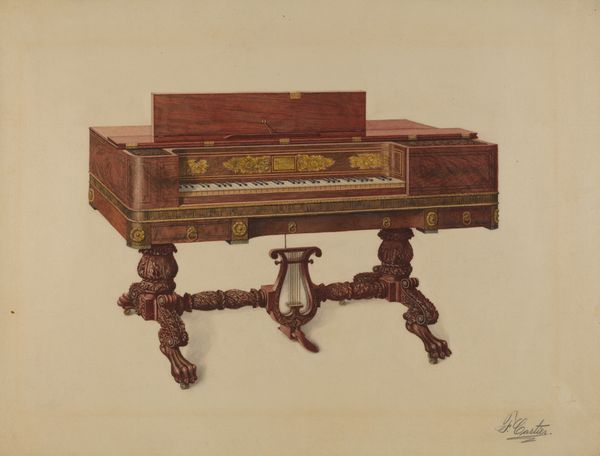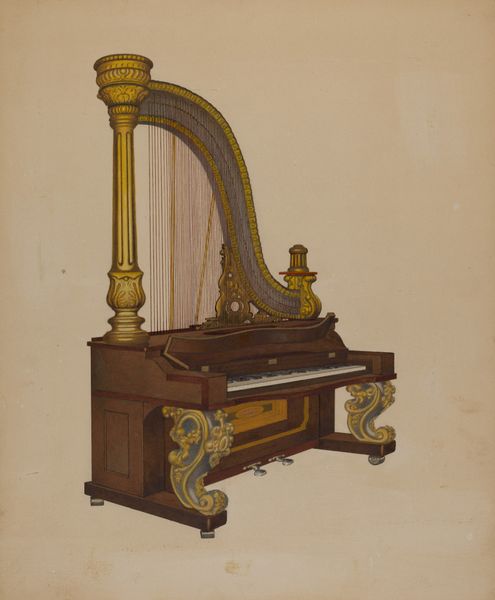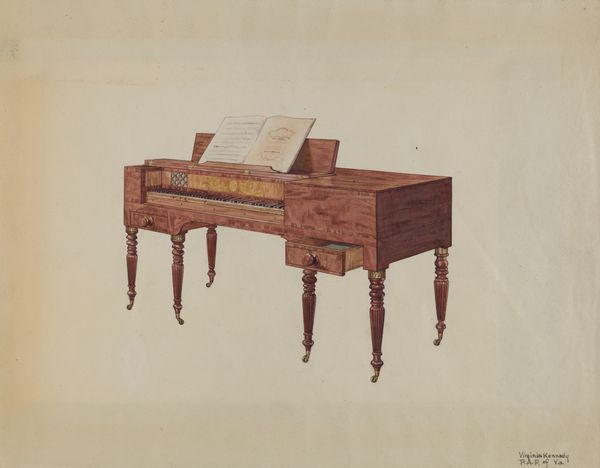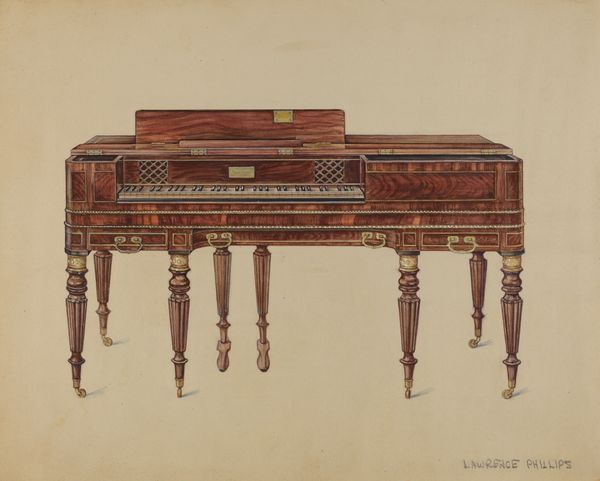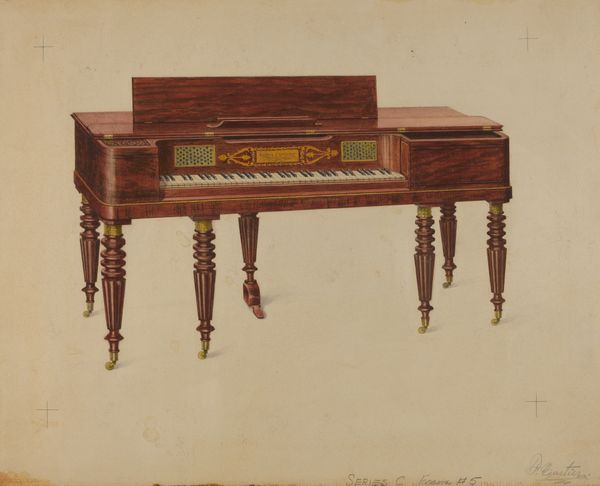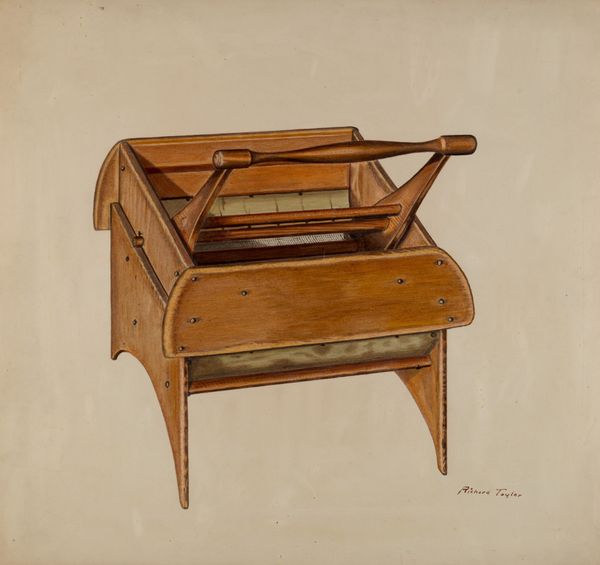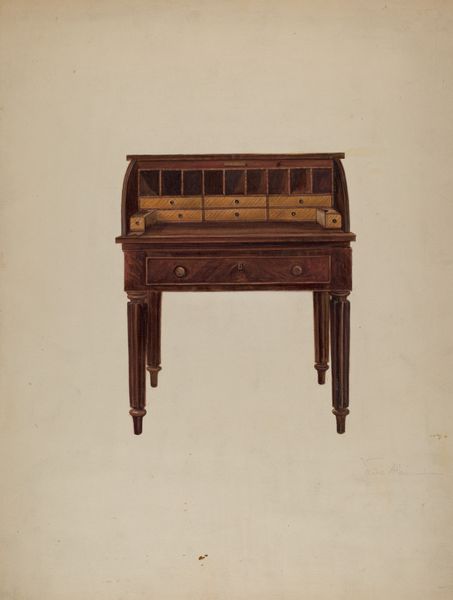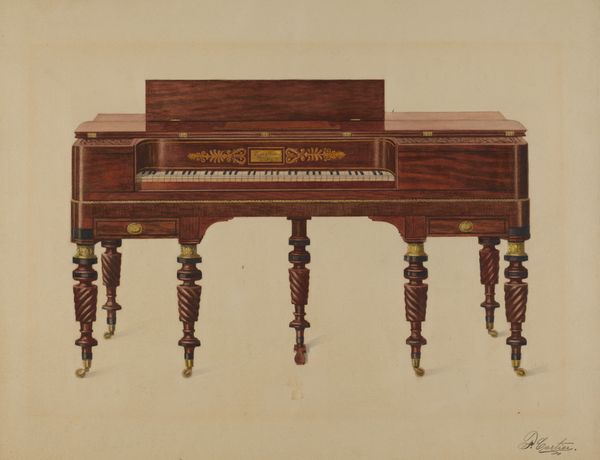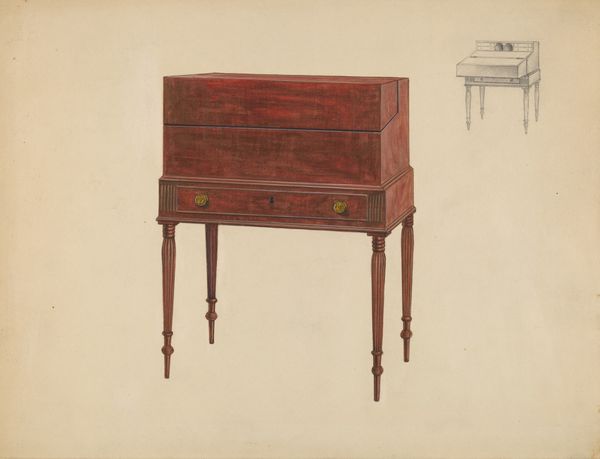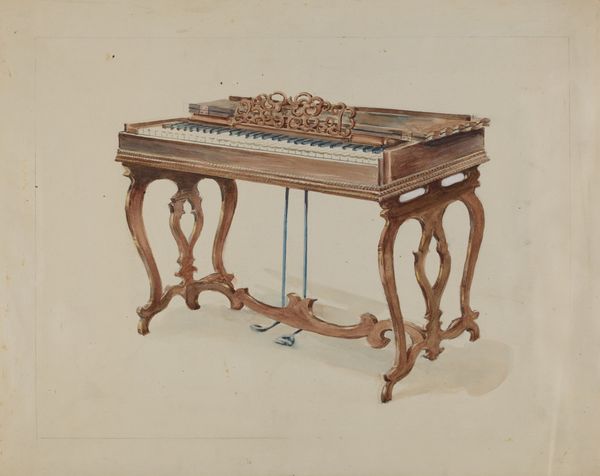
drawing
#
drawing
#
aged paper
#
toned paper
#
water colours
#
charcoal drawing
#
possibly oil pastel
#
oil painting
#
coffee painting
#
underpainting
#
watercolour illustration
#
watercolor
Dimensions: overall: 57.3 x 42.8 cm (22 9/16 x 16 7/8 in.) Original IAD Object: 31" high; 14" deep
Copyright: National Gallery of Art: CC0 1.0
Curator: This lovely piece is titled "Cottage Organ" by Joseph Cannella, created in 1941. The piece seems to be made from watercolor and perhaps charcoal on aged or toned paper. Editor: It's…quiet. Do you know what I mean? The colors, the lines, everything feels very still, hushed. Almost like capturing the ghost of a melody. It's beautiful, but undeniably melancholy. Curator: Absolutely, I agree. I find it very evocative of its time, the pre-war era. There’s a sort of fragility to it, don't you think? It is like these everyday objects carry the weight of impending change, like a suspended memory. Cannella's technique – using delicate watercolor washes and subtle charcoal lines – further reinforces this feeling. Editor: The choice to use those muted tones and thin washes, I find that intriguing. It isn't trying to capture reality in a flashy way. And this isn’t necessarily photorealism; it’s something more subjective. You know, like how memory distorts and softens the edges of things over time. Curator: Exactly! And if you notice the meticulous details of the organ’s decorations – the floral patterns, the delicate lines – they speak to a particular aesthetic value, a desire to find beauty and ornamentation in everyday life. Perhaps as an escape or consolation during more uncertain times. These kinds of instruments were common among families in smaller communities, so it definitely carries connotations of the familial and domestic spheres. Editor: Yes! It’s not just an object; it's a signifier of shared family moments. All those communal sings-songs, family gatherings! Although seeing it depicted so forlorn here, alone on the page, sort of emphasizes that lost connection more profoundly. Curator: It also draws attention to the role of art itself. Art, here, almost performs a preserving function, trying to hold onto something intangible. In this way, “Cottage Organ” isn't just a rendering, but almost a visual poem. Editor: Hmm, it truly captures something poignant, doesn't it? Like pausing time and remembering melodies half-forgotten, even if you’ve never actually heard them before. Curator: Definitely! This work provides not just historical insight but also connects deeply to universal human emotions associated with the passage of time.
Comments
No comments
Be the first to comment and join the conversation on the ultimate creative platform.

